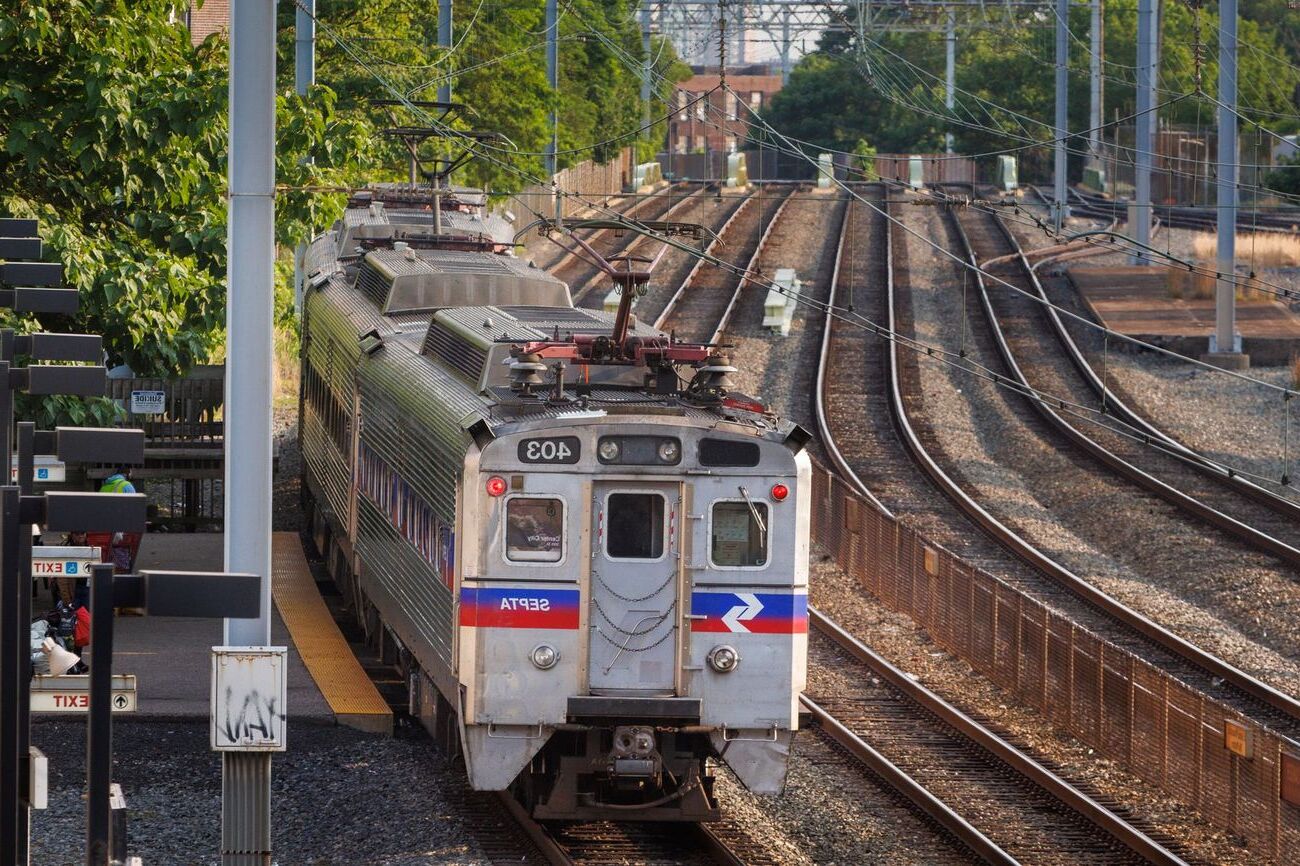
Ever wondered how Philadelphia's public transit system came to be? The Southeastern Pennsylvania Transportation Authority, or SEPTA, has a rich history dating back to 1963. From its early struggles to becoming the sixth-largest transit agency in the U.S., SEPTA has seen it all. Serving five counties and connecting to neighboring states, it operates buses, trolleys, subways, and regional rail. With a fleet of 2,800 vehicles and 285 stations, SEPTA moves nearly 340 million riders annually. Despite challenges like aging equipment and funding issues, SEPTA continues to innovate, focusing on sustainability and community engagement. Dive into these 50 facts to learn more about this vital transit system.
Formation and Early Years
SEPTA, the Southeastern Pennsylvania Transportation Authority, has a rich history that dates back to the early 1960s. Let's dive into the origins and early challenges of this essential transit system.
- SEPTA was formed in 1963 as a state authority to manage and coordinate public transportation in Philadelphia and its surrounding counties. The agency's first organizational meeting took place on February 18, 1964.
- In the late 1950s and early 1960s, public transportation in the Philadelphia region was in decline. Factors such as the growing popularity of cars, suburbanization, and competition from private transit providers contributed to this decline.
- SEPTA was created to address the need for a regional transportation system. It absorbed the Philadelphia Transit Company (PTC) in September 1968, marking a significant step towards its current form.
Operational Overview
SEPTA operates a vast and diverse network, ensuring comprehensive coverage of the region. Here's a look at the different modes and the scope of their operations.
- SEPTA operates across six transportation modes: regional rail, buses, trolleys, subways, and a high-speed line. This diverse network ensures comprehensive coverage of the region.
- SEPTA serves five counties in the Greater Philadelphia area: Philadelphia, Bucks, Chester, Delaware, and Montgomery. It also connects to transit systems in Delaware and New Jersey.
- SEPTA is the sixth-largest transit agency in the United States by weekly ridership. It serves nearly 340 million riders each year, making it one of the busiest transit systems in the country.
- SEPTA operates a fleet of 2,800 vehicles, including buses, trolleys, and rail cars. The regional rail services primarily use "Silverliner" electric multiple unit cars, supplemented by unpowered passenger cars during rush hour.
- SEPTA has 285 subway and rail stations, along with 13,000 bus and trolley stops. This extensive network ensures that riders have multiple options for their daily commutes.
- SEPTA operates 150 routes, providing a comprehensive public transportation network that covers the entire region. The routes include regional rail lines, bus routes, and trolley lines.
Leadership and Funding
Running such a large transit system requires strong leadership and substantial funding. Here's how SEPTA manages these aspects.
- SEPTA is governed by a 15-member board, comprising city, county, and state officials. The General Manager and CEO, Leslie S. Richards, oversees the day-to-day operations of the agency.
- SEPTA has a budget of over $2 billion, making it one of the largest public transportation agencies in the United States. The agency relies on a combination of state and federal funding to operate its services.
- SEPTA employs approximately 9,500 employees, who work tirelessly to ensure that the transit system runs smoothly. The employees include drivers, maintenance staff, and administrative personnel.
Historical Milestones
SEPTA's history is marked by significant milestones and challenges. Here are some key events that have shaped the agency.
- SEPTA's predecessors date back to the early 1900s. The Philadelphia Rapid Transit Company (PRT) was formed in 1903 and began work on the city's first rapid transit line in 1907. This legacy of public transportation has shaped SEPTA's current operations.
- SEPTA has a history of labor strikes, with notable incidents occurring in 1977, 1981, 1983, 1986, 1995, 1998, 2005, 2009, 2014, and 2016. These strikes have often been due to issues related to employee morale and working conditions.
- SEPTA has faced numerous challenges, including management issues, employee morale problems, aging equipment, inadequate funding, and poor public relations. These issues have contributed to the agency's tumultuous history.
Modern Improvements
In recent years, SEPTA has made significant strides in improving its services and infrastructure. Here are some of the key improvements.
- In the 21st century, SEPTA has made significant improvements to its system. The agency utilized $191 million from the American Recovery and Reinvestment Act of 2009 to renovate over 30 major facilities, including the Spring Garden and Girard Avenue subway stations.
- SEPTA inaugurated the first Leadership in Energy and Environmental Design (LEED) station at Fox Chase terminal in 2010. This initiative reflects the agency's commitment to sustainability and environmental responsibility.
- SEPTA established a consolidated, multi-modal control center to manage all aspects of the system. This centralized system helps streamline operations and improve efficiency.
- SEPTA was voted the best large transit agency in North America by the American Public Transportation Association (APTA) in 2012. Despite this recognition, the agency continues to face challenges related to transparency and system-wide expansion.
Community Engagement and Public Relations
SEPTA's relationship with the community and its public image have evolved over the years. Here's how the agency engages with the public and addresses criticisms.
- Despite some improvements, SEPTA still operates under a cloud of non-transparency. The agency has been criticized for lacking a system-wide expansion program and for not providing adequate data on its operations.
- The regional rail division has suffered severe cutbacks in the past, with some routes being converted into rail trails. This has limited the restoration of those services in the foreseeable future.
- SEPTA has been criticized for its bus stop consolidation efforts. The agency has been asked to provide more data on the effectiveness of these consolidations, but the reports have been criticized for lacking detailed information.
- Between 2009 and 2013, SEPTA used sex identification markers on monthly transit passes. This practice was criticized by the lobby group SEPTA Riders Against Gender Exclusion (SEPTA R.A.G.E) for causing harassment and discrimination among transgender and gender-queer individuals. The markers were eventually stopped in June 2013.
- SEPTA has been actively engaging with the community through various initiatives. The agency encourages riders to share their stories and memories through campaigns like "ISEPTAPHILLY" to celebrate its 50th anniversary.
- To celebrate its 50th anniversary, SEPTA launched a year-long campaign featuring an advertising campaign, special contests, and events like "Throwback Thursdays" and "Flashback Fridays." The agency also established a "storyteller station" at the Transit Museum Store for public storytelling and memorabilia donation.
Infrastructure and Future Projects
SEPTA is continually working on improving its infrastructure and planning for the future. Here are some of the ongoing and future projects.
- As part of the anniversary celebrations, SEPTA is establishing an official archive to collect and preserve historical photos and information about the agency. This archive aims to provide a centralized resource for the public and media to access SEPTA's history.
- SEPTA has struggled with poor public relations over the years. The agency has been criticized for its communication strategies, which have often been seen as inadequate or misleading. However, recent efforts have aimed to improve transparency and engagement with the public.
- One of the ongoing challenges for SEPTA is the aging equipment. The agency has been working to modernize its fleet and infrastructure, but this process is complex and time-consuming. The use of older equipment can lead to reliability issues and increased maintenance costs.
- SEPTA has faced funding issues throughout its history. The agency relies on a combination of state and federal funding, which can be unpredictable. This has led to budgetary constraints and the need for creative solutions to maintain services.
- The governance structure of SEPTA, with equal representation for each county, has created political friction between the suburban counties and the city of Philadelphia. This has led to disagreements over service levels, fares, and regional priorities.
- SEPTA operates in a tri-state region, which presents unique challenges. The agency has limited interline fares with transportation authorities in Delaware and New Jersey, and only Delaware has contributed to the costs of operating the regional rail system.
- SEPTA has achieved several historical milestones, including the absorption of the Philadelphia Transit Company (PTC) in 1968 and the inauguration of the first Leadership in Energy and Environmental Design (LEED) station at Fox Chase terminal in 2010.
- SEPTA plays a crucial role in connecting people with opportunity, catalyzing the economy, and sustaining the environment. The agency supports equity and enhances quality of life by providing safe, reliable, and accessible mobility choices for everyone.
- SEPTA has a significant economic impact on the region. By providing a reliable public transportation system, the agency helps to attract businesses and residents, thereby stimulating economic growth and development.
- SEPTA is committed to environmental sustainability. The agency has implemented various initiatives aimed at reducing its carbon footprint, such as the use of LEED-certified stations and the promotion of alternative modes of transportation.
- SEPTA engages with the public through various campaigns and initiatives. The agency encourages riders to share their stories and memories, which helps to build a sense of community and ownership among users.
- Despite the challenges, SEPTA employees are dedicated to their work. The agency has implemented various programs aimed at improving employee morale, including training initiatives and recognition programs.
- SEPTA has a complex history of labor relations. The agency has experienced numerous labor strikes over the years, but it has also made efforts to improve relations with its employees through collective bargaining agreements and employee recognition programs.
- SEPTA operates a transit museum that showcases the history of public transportation in the region. The museum features exhibits on the evolution of transit systems, historic vehicles, and memorabilia.
- SEPTA has been working on improving its stations. The agency has renovated several stations, including the Spring Garden and Girard Avenue subway stations, to enhance passenger experience and improve safety.
- SEPTA is currently involved in the Bus Revolution project, which aims to modernize the bus fleet and improve bus services. The project includes the introduction of new bus models and the implementation of advanced technologies to enhance efficiency and reliability.
- The Drexel Station at 30th Street Design Project is another ongoing initiative by SEPTA. The project involves the redesign and renovation of the Drexel Station to improve passenger flow and enhance the overall passenger experience.
- SEPTA is also working on improving the Susquehanna-Dauphin Station. The project includes renovations to enhance passenger comfort and safety, as well as improvements to the station's infrastructure.
- SEPTA has various community outreach programs aimed at engaging with the public and improving services. The agency participates in local events and initiatives to promote public transportation and encourage community involvement.
- SEPTA has implemented several sustainability initiatives, including the use of renewable energy sources and the promotion of alternative modes of transportation. The agency aims to reduce its carbon footprint and contribute to environmental sustainability.
- SEPTA prioritizes public safety. The agency has implemented various safety measures, including security cameras, emergency response systems, and regular safety inspections to ensure a safe environment for passengers.
- SEPTA is committed to accessibility. The agency provides services for passengers with disabilities, including wheelchair-accessible vehicles and stations. SEPTA also offers special programs for seniors and individuals with disabilities.
- SEPTA provides excellent customer service. The agency has a customer service department that handles complaints and feedback from passengers. SEPTA also offers various programs to improve customer satisfaction, such as loyalty programs and rewards for frequent riders.
- SEPTA collaborates with other transportation agencies and organizations to enhance services and improve efficiency. The agency partners with local businesses and community groups to promote public transportation and support economic development.
- SEPTA continues to evolve and improve its services. The agency is working on several future projects, including the Bus Revolution project, the Drexel Station design project, and the Susquehanna-Dauphin station improvements. These initiatives aim to modernize the transit system, enhance passenger experience, and improve overall efficiency.
SEPTA's Impact and Future
SEPTA has come a long way since its formation in 1963. From absorbing the Philadelphia Transit Company to becoming one of the largest transit systems in the U.S., it's clear SEPTA plays a crucial role in the Greater Philadelphia area. With a diverse network of buses, trolleys, subways, and regional rail, SEPTA serves millions of riders annually. Despite challenges like aging equipment, funding issues, and labor strikes, the agency continues to improve and modernize. Initiatives like the Bus Revolution project and station renovations show SEPTA's commitment to enhancing passenger experience. As it looks to the future, SEPTA aims to maintain its role in connecting communities, supporting the economy, and promoting sustainability. The agency's ongoing efforts to engage with the public and improve services ensure that SEPTA will remain a vital part of the region's infrastructure for years to come.
Was this page helpful?
Our commitment to delivering trustworthy and engaging content is at the heart of what we do. Each fact on our site is contributed by real users like you, bringing a wealth of diverse insights and information. To ensure the highest standards of accuracy and reliability, our dedicated editors meticulously review each submission. This process guarantees that the facts we share are not only fascinating but also credible. Trust in our commitment to quality and authenticity as you explore and learn with us.


